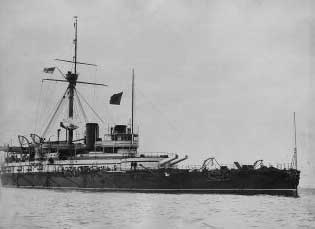|
Letters
Screws helped to drive the HMS Victoria wreck straight into the bottom? HMS Victoria Hello Sir, Just a few quick questions regarding the Victoria as she sank; as the last engine order I can find was one to reverse the port screw or possibly even both engines, and as there certainly seems to have been enough time following the collision to have stopped the engines - a. why were the engines still engaged at the time of the final plunge? b. was the port screw in fact reversed? this line from the Wikipedia account makes me wonder what actually was ordered and how much of it was or was not carried out;
The reason I'm wondering this is due to the assertion that the screws helped to drive the wreck straight into the bottom, when it seems that this may not have been the case at all. Furthermore, I'm not sure how much of an effect both screws would have on a sinking ship which had been steaming at 8.8 knots. Respectfully,
Thanks for your email and your interesting questions. We can make several assumptions. 1. Victoria's engines were both going astern at the time of the collision, but too late and Camperdown pushed her ram deep inside Victoria, tearing a large hole in her, its doubtful that all the water tight doors were closed in Victoria. Hundreds of tons of seawater would rush into the stricken ship, and she lists to starboard, and soon capsizes. To stop engines, probably it was too late, and it would have made little difference. The turret located forward carried two 16.25 inch guns and weighed in at 111 tons, with the bows pointing downwards and her stern rising, the sheer weight of sea water and the turret would I think drive the ship downwards, the propellers going astern would have made not much difference. 2. Victoria's port engine is going astern, and her starboard one ahead, this would tend to turn the ship to port, but as in 1 above, the seawater and turret weight would be the major factors in the ship sinking. I agree with you, the propellers were not the main factor in driving Victoria to the bottom, they may have assisted the process, but as we are unsure which way they were set, astern or ahead, we cannot be definitive in the part they played in this saga.
Another report:
Finding the wreck of Victoria See URL: http://www.inspired-training.com/hms%20victoria.htm Best regards, |


